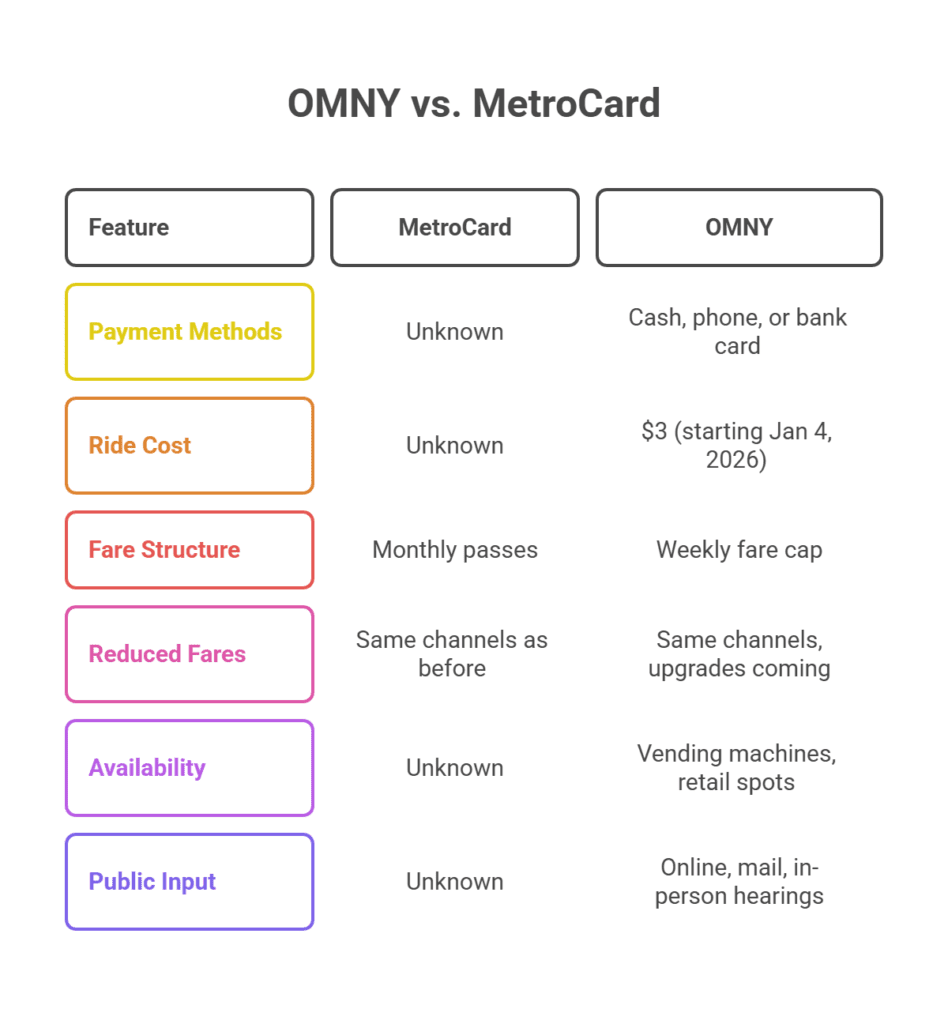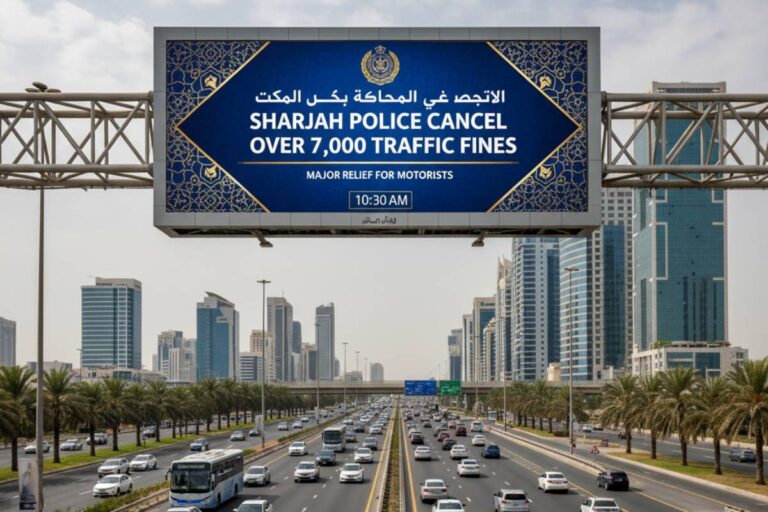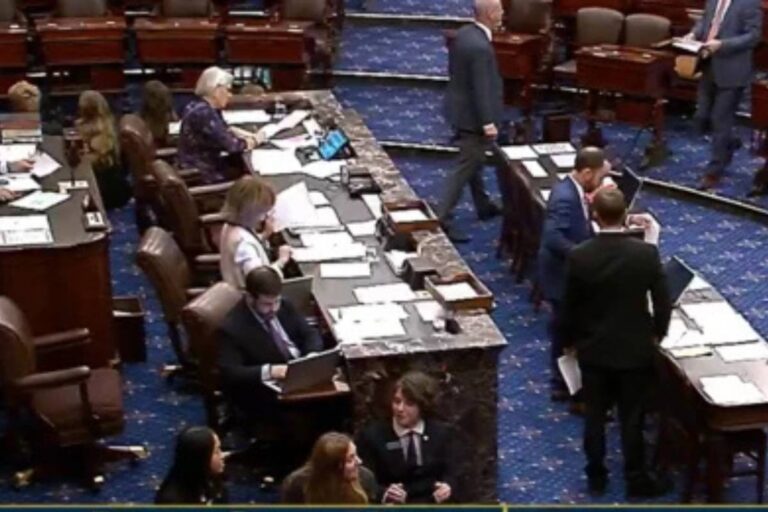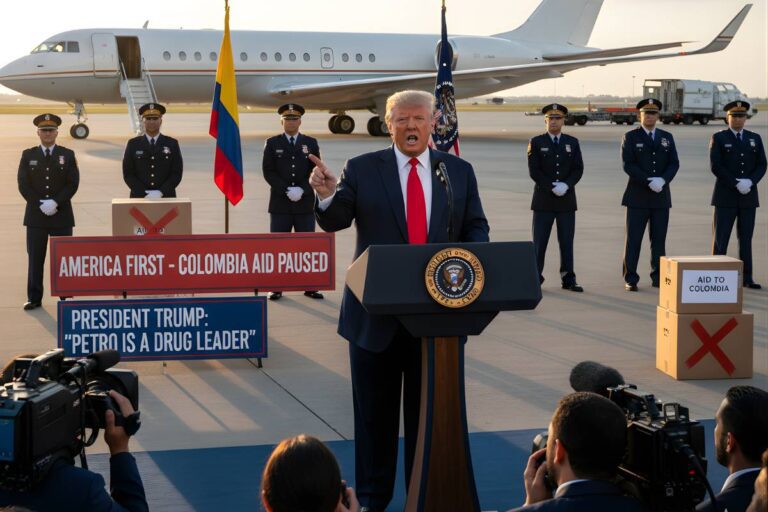Big Change Hits the Subway: Your Commute, Reimagined
New York, restless, relentless, running on rails that crisscross its underbelly. Some things never change in the city that never sleeps, or so it seemed, until now. The Metropolitan Transportation Authority (MTA) has announced something that’s about to affect millions: the familiar yellow-and-blue MetroCard, a fixture since the Clinton era, is officially taking its last ride. And, along with the card’s introduction, New Yorkers will see subway and bus fares increase to a neat $3 for a single base ride, the first such hike in years.
Funny thing is, even in a city that’s always in a rush, not everyone saw this coming so soon. Here’s what’s changing, when, and, maybe most importantly, why.
Goodbye MetroCard, Hello OMNY: The Era of Tap-and-Go
Let’s start with the big headline: By the end of 2025, the MTA will stop selling MetroCards altogether. In their place? OMNY, the contactless, tap-and-go system that allows you to pay with a phone, bank card, or physical OMNY card, has become the dominant way to ride subways and city buses.
- MetroCard sales end: December 31, 2025. That’s it. After that, you can’t buy new ones.
- Still holding a MetroCard? No need to panic. Old cards will be accepted into 2026, though the exact last day is still under wraps.
- Where can you get OMNY? OMNY cards and vending machines are rolling out citywide, at every subway station, almost every neighborhood bodega, and online.
“85% of full-fare customers and over half of reduced-fare riders are already tapping in with OMNY,” the MTA says.
For people who stick to cash? OMNY cards are available for a couple of bucks. Just load them up, no smartphone necessary.
The 2026 Fare Increase: What to Expect
Alright, here’s the kicker: the new $3 fare kicks in January 4, 2026, pending final board approval after a round of public hearings in the fall.
By the Numbers
- Current base fare: $2.90
- New base fare (Jan 2026): $3.00
- Reduced fare: Will nudge up from $1.45 to $1.50 for eligible riders
- Express bus fare: Climbs from $7.00 to $7.25
- Weekly subway/bus “fare cap”: Jumps from $34 to $36 (we’ll explain that quirk below).
But wait, fares for commuter rail lines tick up 4.4% as well, and drivers can expect steeper tolls on major bridges and tunnels, as the city keeps pace with inflation and infrastructure demands.
Why the Increase? Costs, COVID, and Catch-Up
Believe it or not, New York’s transit fares have adjusted only gradually over the years. The last increase, back in August 2023, added just 15 cents, after a pandemic freeze. Even with this new bump, the MTA says that fares, in real dollars, trail behind the skyrocketing costs seen elsewhere, housing, groceries, utilities, you name it.
“Transit is one of the few elements that keeps New York affordable, and we intend to maintain it that way,” says Janno Lieber, MTA Chair and CEO.
But running the largest transit system in America isn’t cheap. The MTA, which oversees subways, buses, the LIRR, and Metro-North, points to several key reasons for the shift:
- Inflation: Everything costs more, from electricity to train parts.
- Ridership patterns: COVID-19 changed commuting. While numbers are bouncing back, they still lag behind the old rush-hour peaks.
- Fare evasion: The agency loses nearly $700 million a year from people dodging fares. The tap-and-go system promises better compliance and less leakage.
- Cost savings: By ditching the MetroCard, the MTA expects to save at least $20 million yearly. No more stacks of plastic or broken vending machines.
What’s New for Riders: Unlimiteds, Fare Capping, and the End of the 30-Day Pass
Here’s where things get interesting, especially if you’re a daily subway warrior or a once-in-a-while subway surfer.
No More 30-Day MetroCards
Remember the monthly unlimited MetroCard? Kiss it goodbye. The 30-day option disappears as MetroCard sales end. Instead, OMNY’s built-in fare capping rules the day:
- How fare capping works: If you tap in (with the same OMNY card, credit card, or device) and spend $36 within seven days, the rest of your rides that week are free. That means if you travel more than 12 times in a week, you stop paying after the 12th swipe.
- Need more flexibility? OMNY cards work with cash and can be reloaded at thousands of locations, ideal for families or anyone without a smartphone.
- Weekly express bus “cap”: Express bus users will pay a maximum of $67 in a week before rides become unlimited for the rest of the period.
Commuters, take note: You’ll have to change the way you budget for rides. But OMNY’s approach means fewer wasted dollars on unused passes.
For Nostalgic New Yorkers: MetroCard’s Last Hurrah
Three decades of yellow swipes, missed trains, and bent plastic ends, gone. The MetroCard debuted in 1994, overtaking the coin-tossing subway tokens that were part of city lore. Collectors and transit fans are snatching up limited-edition MetroCards as keepsakes. Rumor has it they’ll be popping up in art projects, and maybe, just maybe, subway museums of the future.
If you’re sentimental? Grab yours before they vanish at the end of the year.
Upgrading Payments: OMNY and Beyond
Catching up with major transit systems worldwide, OMNY (One Metro New York) brings the city into the 21st century:
- Tap and ride using iPhones, Androids, contactless bank cards, or the blue OMNY card.
- Sign up online or in person at expanded locations.
- Seven-day “best value” cap is automatic, nothing to track except using the same payment method each time.
Not everyone’s thrilled. Some riders, especially older New Yorkers, have voiced concerns about switching from physical cards to digital devices. The MTA says anyone who wants a card can still get one, no smartphone required.
But for those who prefer tapping their phone or credit card? The days of paper magstripes are gone.
What About Accessibility and Equity?
Let’s not forget: New York is home to people from every walk of life. That means any big change, especially to public transit, needs to be accessible, physically, financially, and technologically.
- Reduced fare riders: The OMNY card now works for seniors and people with disabilities, no need to register a smartphone or bank account if you don’t have one. Enrollment is available at the MTA Customer Service Center or by mail.
- Cash payments: Still accepted through OMNY cards at retail stores and vending machines.
- Language help: Updated machines and support material are available in several major languages.
The MTA pledges to expand outreach, with pop-up events and “Mobile Sales Vans” offering customer help around the city, especially in lower-income neighborhoods.
Beyond Subways: What Else is Getting Pricier?
A new fare for your 6 train or M5 bus isn’t the only wallet hit coming for commuters.
Here’s a quick rundown:
- Long Island Rail Road & Metro-North: 4.4% increase in fares, including single-ride, weekly, and monthly tickets.
- Tolls: Most major bridges and tunnels, including RFK, Whitestone, Throgs Neck, and Verrazzano, see a 7.5% jump for drivers. E-ZPass holders will pay about fifty cents more on some crossings.
- OMNY card price: Reusable OMNY cards will cost $2 next year, up from $1.
Oh, and congestion pricing, set to bring in $500 million this year, remains, as does the city’s perpetual push-pull between funding, fairness, and fixing the system.
The Public Speaks: Hearings, Criticism, and Next Steps
No surprise, not everyone’s thrilled about a fare hike, especially when the service, by many accounts, isn’t keeping up. Mayor Eric Adams weighed in, calling the proposal “offensive to hard-working New Yorkers” and urging the board to reject it unless service improvements can be shown. Transit riders, advocates, and incoming officials are demanding more transparent investment in reliability and cleanliness.
If you want to have your say? The MTA plans a round of public hearings and will collect comments, online, in person, even by old-fashioned mail, before a final board vote in the fall of 2025.
Why Now? The Big Picture: Running New York’s Lifeline
Public transportation is the city’s bloodstream: over 5 million daily subway rides, 2 million bus boardings, and countless foot soldiers hopping from borough to borough. Even as COVID reshaped the rush hour, the numbers are rebounding, and the MTA says efficiency gains, along with new tech, will keep the system humming.
- The MTA claims $500 million in annual savings since 2021 due to cost-cutting, increased enforcement against fare evasion, and, notably, ditching old technology.
- The MetroCard phase-out alone is supposed to save at least $20 million each year.
“We’re giving people much more service on all of the system,” MTA Chair Lieber said recently. “Affordability isn’t just about the fare, it’s having a system that works, reliably and safely, every day.”
What Riders Need to Know: Quick Tips for the Switch

Let’s put the details into plain English:
- MetroCard out, OMNY in. Buy OMNY cards with cash or use your phone or bank card.
- $3 per ride starting January 4, 2026 (pending final MTA board approval).
- Weekly fare cap means pay-for-what-you-use, not what you might use.
- No more monthly passes, budget for a weekly ride cap instead.
- Reduced-fare riders: Use the same channels as before, but watch for OMNY upgrades and mail-ins.
- Plan: New vending machines and retail spots everywhere, but expect long lines in late December.
- Public input matters: Comment online, by mail, or at in-person hearings through fall 2025.
The Takeaway: A New Commute for a Changing City
Change is tough, even in a city famous for reinvention. But as MetroCard fades and OMNY takes its place, New York is betting big on tech, efficiency, and a streamlined experience at the turnstile. It’s a fresh chapter for subways and buses. Just don’t forget those three bucks come January, because in this city, life’s only ever a swipe (or tap) away.






















